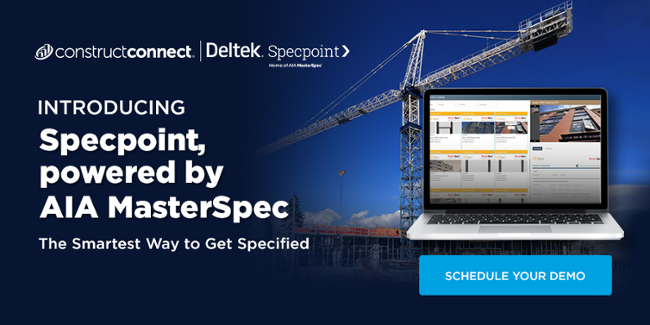As the old adage goes, time is money. The more production you can squeeze out in a period of time, the more money you make, right? But if you’ve been struggling with improving production or even if everything is going fine, there are several things you can do to increase throughput without sacrificing quality from removing obstacles to reorganizing the way you work.
Below are six ways to increase productivity at your manufacturing facility.
#1 - Review Your Existing Workflow
You won’t know what can be changed until you know how everything works now. Three areas contain critical information to help you identify needed changes.
- People - Do you have people with the right skills in the right places? Do you have a project manager to keep the critical pathway visible and on track? Are objectives clearly defined, realistic, and safe?
- Processes - When was the last time you mapped your processes? Have you used value stream mapping to assess process improvement projects? Where are the pain points and bottlenecks?
- Equipment and technology - Is all your equipment in good repair? Is the technology you rely on optimal for your current needs? How easy is it to make changes in production?
Before you make any changes, understand how everything works now. There is still value in the saying, “If it ain’t broke, don’t fix it.” Unless you can identify a financial or safety reason for making a change, think long and hard about the value of the expected outcome.
#2 - Update Processes and Technology
Once you have reviewed and mapped your existing workflow, start identifying areas where processes and/or technology could use some updating or changing. Processes that have been in place for a long time may be riddled with workarounds as new equipment was added or production methods changed.
- Automation is a powerful tool for increasing efficiency and reducing error.
- New software solutions can help with scheduling, inventory, and monitoring workflow.
- Improvements in equipment can improve production speed and quality.
When identifying new technology and equipment, keep in mind the total cost of ownership and how the bottom line will be affected. A high initial expense is worth it if the total cost of ownership is lower than the technology or process you are replacing and if it solves a problem such as a clearing a production bottleneck or reducing scrap.
#3 - Commit to Scheduled Maintenance
The fastest way to slow things down is by ignoring regular maintenance. Downtime for maintenance costs much less than downtime due to broken and worn equipment. Maintenance can be scheduled; breakage always comes at the worst possible time.
- Train all operators in regular maintenance and troubleshooting procedures.
- Schedule preventive maintenance at regular intervals.
- Identify the best time for maintenance by using information from the floor and your workflow processes.
- Don’t delay maintenance.
Preventive maintenance ensures that your equipment continues to run smoothly without unexpected downtime or work stoppage.
#4 - Train and Educate Employees
Employee education and training is an ongoing process. In some industries, certain types of training are mandatory, such as daily safety training for all personnel using safety gear. New equipment and technology requires training to get the most value. Employee education is also an excellent retention tactic; new employees take time to become proficient, causing a slowdown in production.
- Schedule training sessions for all operators when new equipment is installed.
- Keep accurate records of training and schedule refreshers if needed.
- Offer educational opportunities for employees who wish to advance or obtain new skills.
Don’t limit training and education to equipment. Your manufacturing facility will run more smoothly if everyone understands your policies on workplace harassment and proper communications.
#5 - Organize the Workspace
Reducing movement and clutter saves time.
- Reduce movement for optimal task efficiency.
- Create the optimal layout of tools and materials for the job or process.
- Remove unneeded or unused tools and materials from the workspace.
- Create organized storage to reduce time to find materials, documents, and equipment.
- Layout the manufacturing floor to maximize efficiency.
Reduce travel time and distance wherever possible. If a product must be moved from one machine to another, is there a way to shorten the distance, orient the product, or move the product more quickly yet safely to the next step in the process? Is there a software solution that could improve scheduling?
Excess movement is a sign of poor organization and can cost you plenty in production time. Consider techniques such as Kanban (just-in-time production) to reduce delays and increase efficiency.
#6 - Maintain Optimal Inventory
If you have too much inventory, you need a place to store it and hope you will use it all. If you have too little, you run the risk of a work stoppage as you wait for more inventory. Optimizing inventory is especially important if you are following lean manufacturing principles such as the previously mentioned Kanban technique.
- Use software to track inventory and create automatic notifications of shortages. You may be able to allow vendors direct access to your inventory counts and automatically fulfill needed supplies.
- Create favored vendor relationships to gain accountability for the quality of parts and timeliness of deliveries.
- Make predictions about the impact of particular shortages and put processes in place to mitigate production delays.
Keep track of rejection rates, declining quality, and late deliveries so you can rectify them with the vendor or find a new one. If you know one of your vendors is undergoing an extensive change such as a sale to another company, request assurances and guarantees that your deliveries will continue as before.
Increased productivity should be driven by deliberate change rather than rapid “fixes” that may help in the short term but cause long-term problems. Also, increasing productivity on the backs of employees can result in burn-out and turnover as well as costly safety problems.
A thorough review of current production processes and equipment can uncover hidden bottlenecks that may be easily remedied by a change in the process or new technology. Maintaining equipment in good repair reduces unexpected work stoppage. Training and good organization will provide a safe work area and could result in new suggestions from the workers themselves about resolutions for problems they see every day.
Finally, increased productivity results in increased revenue and the opportunity to expand the business, take on more work, or increase wages or new equipment purchases. Make it a policy to review your processes regularly. New manufacturing equipment, materials, and techniques arrive all the time. Be prepared to adopt those that provide the most value for your company.
Steve Wright works for Whirlwind Steel, a manufacturer of pre-engineered steel buildings and components. Whirlwind Steel metal buildings are manufactured and designed to meet the highest quality standards.

